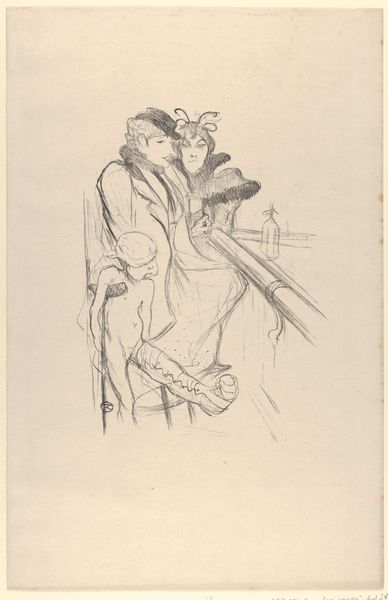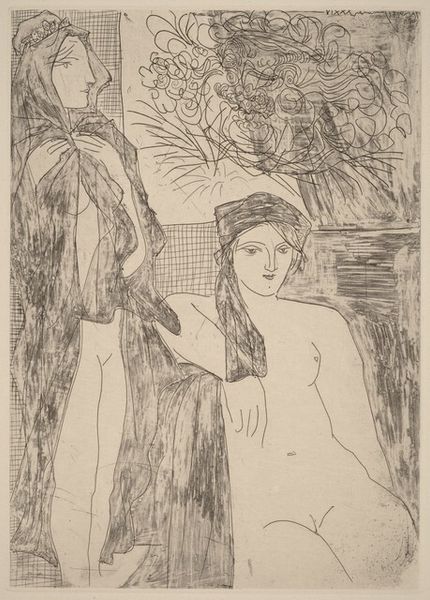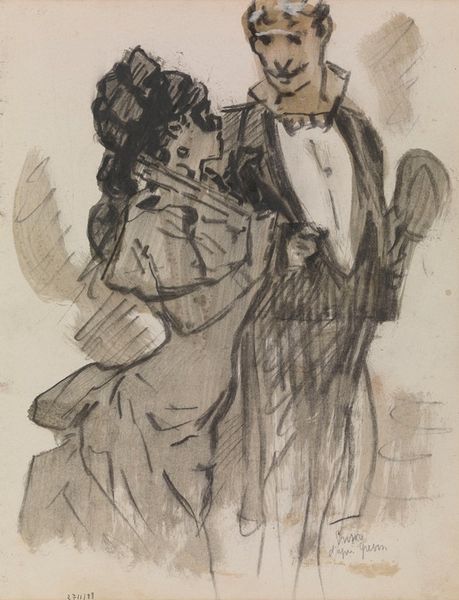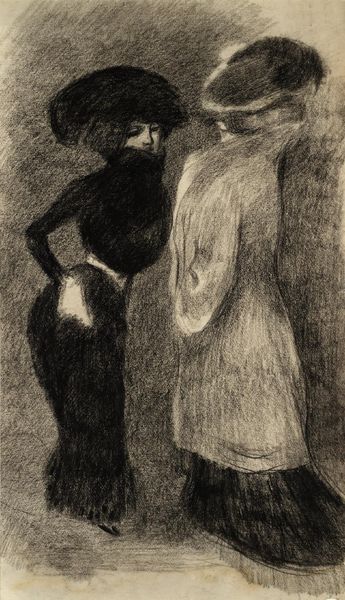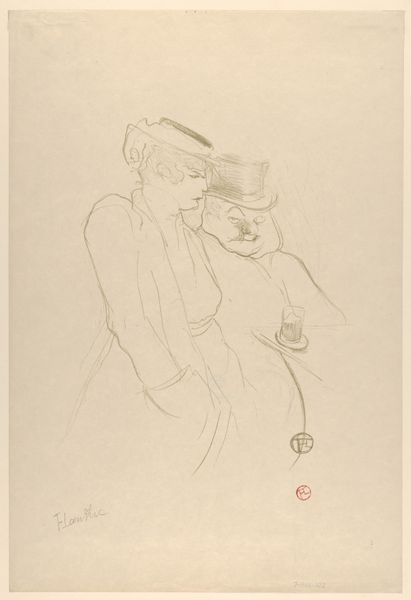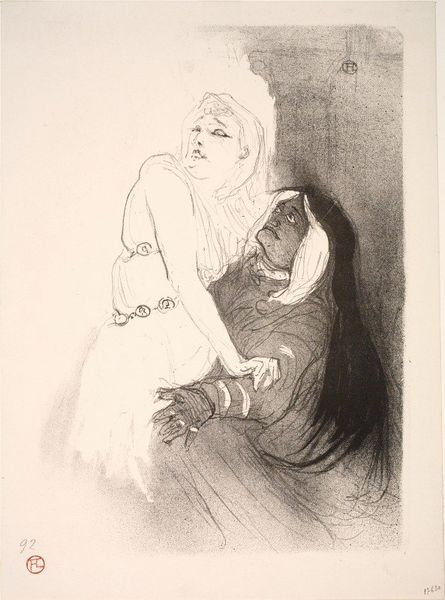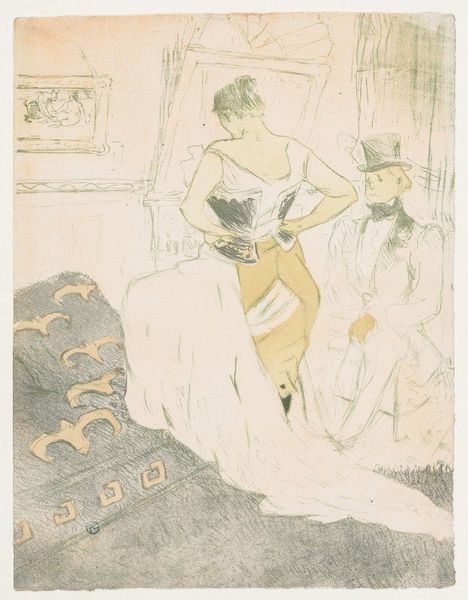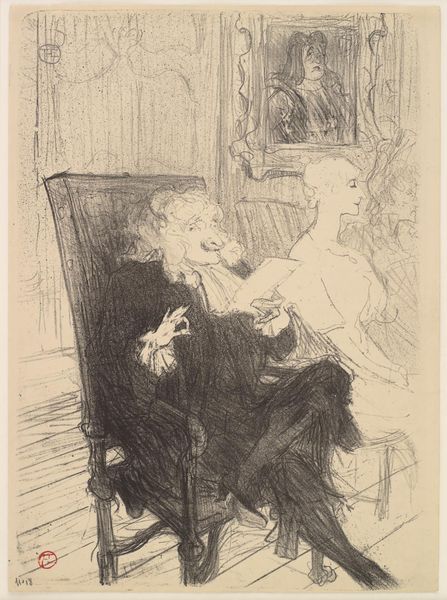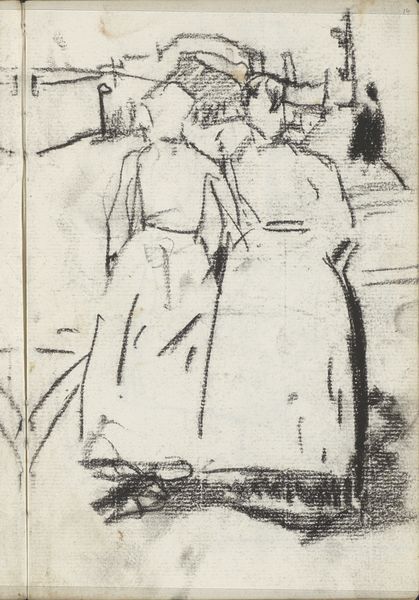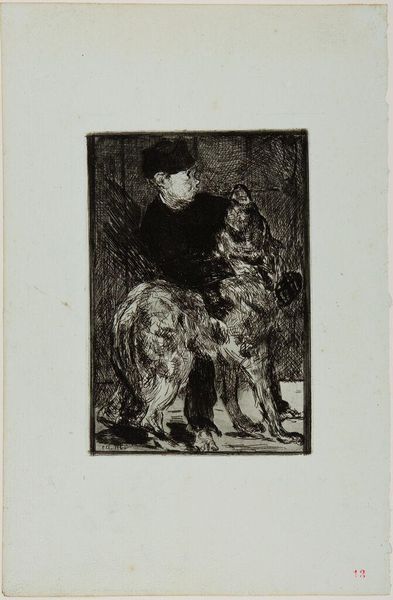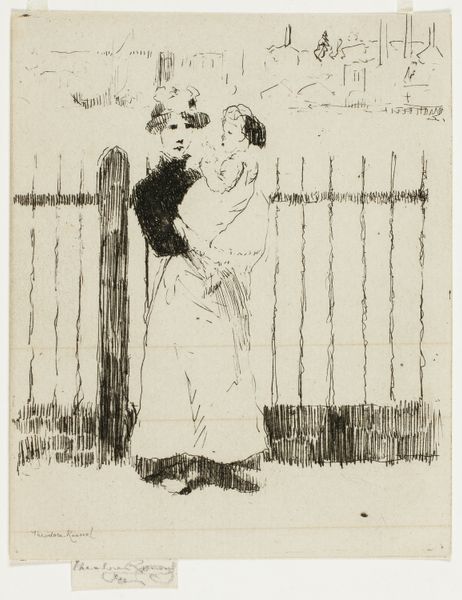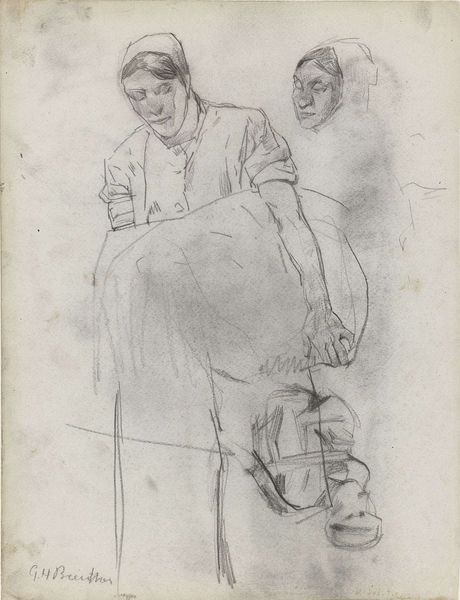
Copyright: Public domain
Editor: Toulouse-Lautrec’s 1894 lithograph, Moulin Rouge: L’Union Franco-Russe, at the Brooklyn Museum, has a casual feel. It’s very lightly sketched. The woman in the dark dress appears more grounded compared to the figure next to her. What strikes you about this piece? Curator: The figures! Let’s dive in. I see in the assured lines, heavy shading and soft modeling, a symbolic juxtaposition of the robust "Marianne," or France, next to a somewhat wavering personification of Russia. Can you sense how the French figure, seemingly so bold and direct, practically eclipses Russia's presence? Editor: Yes, I see what you mean, the contrast is quite clear. It makes me wonder, why portray Russia like that? Curator: The context, that’s the key. Look closer – the "Union Franco-Russe." This lithograph emerged as France and Russia solidified a political alliance. But was this union perceived as truly balanced? Consider the late 19th-century French perspective on Russia. This artwork could signify France taking a leading role. Does the symbolism alter how you view the composition? Editor: It does. Knowing that shifts my perspective. I initially just saw two people, but now, recognizing the allegorical context, it feels a bit like propaganda. Curator: Exactly! That seemingly spontaneous sketch holds layers of meaning reflecting not just a relationship between countries, but the nuances and power dynamics within it. It's a potent visual shorthand of a particular moment in history, coded in imagery. Editor: It's incredible how a seemingly simple print can carry so much symbolic weight. I'll definitely look at other prints differently now, considering their historical context. Curator: Indeed. These visual echoes of cultural and political narratives shape our understanding and inform the visual vocabulary we use, even today.
Comments
No comments
Be the first to comment and join the conversation on the ultimate creative platform.

